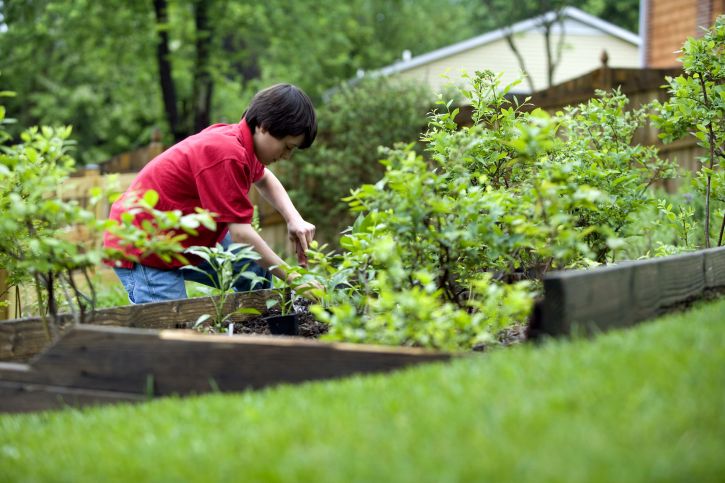Sustainable Gardening, Eco-Friendly Tips

Sustainable Gardening: Nurturing Nature, One Plant at a Time
Introduction
Ever felt like your garden could be doing more for the environment? You're not alone. Sustainable gardening practices are gaining traction as eco-conscious gardeners seek to create spaces that are not just beautiful, but also beneficial to the planet. Let's dive into the world of sustainable gardening practices and explore how you can transform your garden into a haven for both people and the planet.
Understanding Sustainable Gardening
What is Sustainable Gardening?
Sustainable gardening is an approach that focuses on creating gardens that are not only aesthetically pleasing but also environmentally friendly, economically viable, and socially responsible. It's about working with nature, not against it, to create a harmonious, low-maintenance space that supports local ecosystems and reduces your carbon footprint.
Why Sustainable Gardening Matters
Think of your garden as a tiny ecosystem. Every plant, insect, and microbe plays a role in keeping it healthy and balanced. Sustainable gardening practices help protect this delicate balance, preserving biodiversity and supporting the health of the wider environment.
Getting Started: Assessing Your Garden
Before you start making changes, it's essential to understand your garden's unique characteristics. Observe the sunlight patterns, soil type, and existing plants. This will help you make informed decisions about what to plant and how to care for your garden.
Designing for Sustainability
Native Plants: Nature's Choice
Native plants are the backbone of sustainable gardening. They're adapted to your local climate and soil conditions, requiring less water, fertilizer, and pesticides than exotic species. Plus, they provide vital habitat and food sources for local wildlife.
Permaculture: Designing for Abundance
Permaculture is a holistic approach to garden design that focuses on creating sustainable, productive landscapes. By mimicking natural ecosystems, permaculture gardens are designed to be low-maintenance, resilient, and abundant.
Soil Health: The Key to a Thriving Garden
Healthy soil is the foundation of any sustainable garden. It supports plant growth, stores water, and filters pollutants. To maintain soil health, avoid tilling, minimize disturbance, and incorporate organic matter regularly.
Composting: Turning Waste into Wealth
Composting is a vital sustainable gardening practice that transforms kitchen scraps and garden waste into nutrient-rich fertilizer. By composting, you reduce waste sent to landfills, sequester carbon, and improve your soil's health.
Water-Wise Gardening
Conserving Water: A Drop at a Time
Water is a precious resource, and sustainable gardens use it wisely. Install rain barrels to collect runoff, use drip irrigation to minimize evaporation, and group plants with similar water needs together.
Xeriscaping: Beauty in Drought Tolerance
Xeriscaping is a landscaping method that uses drought-tolerant plants to create beautiful, low-water gardens. By choosing plants that thrive in your local climate, you can reduce water usage and create a sustainable, low-maintenance landscape.
Pest Control: The Organic Approach
Pests and diseases are inevitable in any garden, but sustainable gardeners choose organic methods to control them. This might involve introducing beneficial insects, using physical barriers, or applying organic pesticides like neem oil or soap sprays.
Soil Testing: The First Step to Healthy Soil
Before you start amending your soil, it's crucial to understand its composition. A soil test will provide insights into your soil's pH, nutrient levels, and organic matter content. This information will guide your decisions about what amendments to add and which plants to grow.
The Role of the EPA in Sustainable Gardening
The Environmental Protection Agency (EPA) plays a crucial role in promoting sustainable gardening practices. Their Soil and Groundwater Information System provides valuable resources and data on soil health, contamination, and remediation. By staying informed, you can make decisions that protect your garden and the wider environment.
Case Studies: Sustainable Gardening in Action
From rooftop gardens to community green spaces, sustainable gardening is transforming landscapes worldwide. Explore these case studies to see how others are putting sustainable gardening practices into action.
The Future of Gardening: Trends in Sustainability
As awareness of environmental issues grows, so too does the demand for sustainable gardening practices. From vertical gardens to regenerative agriculture, the future of gardening is green and sustainable.
Conclusion
Sustainable gardening is more than just a trend; it's a movement towards a greener, healthier future. By embracing practices like organic gardening, composting, and planting native species, you can create a garden that supports both people and the planet. So, grab your gloves and let's get gardening – sustainably!
FAQs
-
Q: How can I attract beneficial insects to my garden? A: Plant a variety of native plants that provide nectar and pollen. Include plants with different bloom times to ensure a continuous food source. Also, avoid using pesticides that harm beneficial insects.
-
Q: What is the best way to amend my soil? A: Start by conducting a soil test to understand your soil's composition. Then, incorporate organic matter like compost or well-rotted manure to improve soil structure, water retention, and nutrient levels.
-
Q: How can I create a sustainable lawn? A: Choose a grass species native to your region and adapted to your soil conditions. Mow high to encourage deep root growth, and reduce water and fertilizer use. Consider alternatives like clover or native grasses for a low-maintenance, eco-friendly lawn.
-
Q: What are some sustainable alternatives to chemical fertilizers? A: Compost, manure, and plant-based fertilizers like blood meal or fish emulsion are all sustainable alternatives. Slow-release organic fertilizers can also provide a steady supply of nutrients to your plants.
-
Q: How can I create a sustainable garden on a budget? A: Start small and focus on native plants that require minimal care. Collect rainwater, make your own compost, and upcycle materials for garden decor. As your skills and resources grow, you can expand your garden and incorporate more sustainable practices.
0 Response to " Sustainable Gardening, Eco-Friendly Tips"
Post a Comment